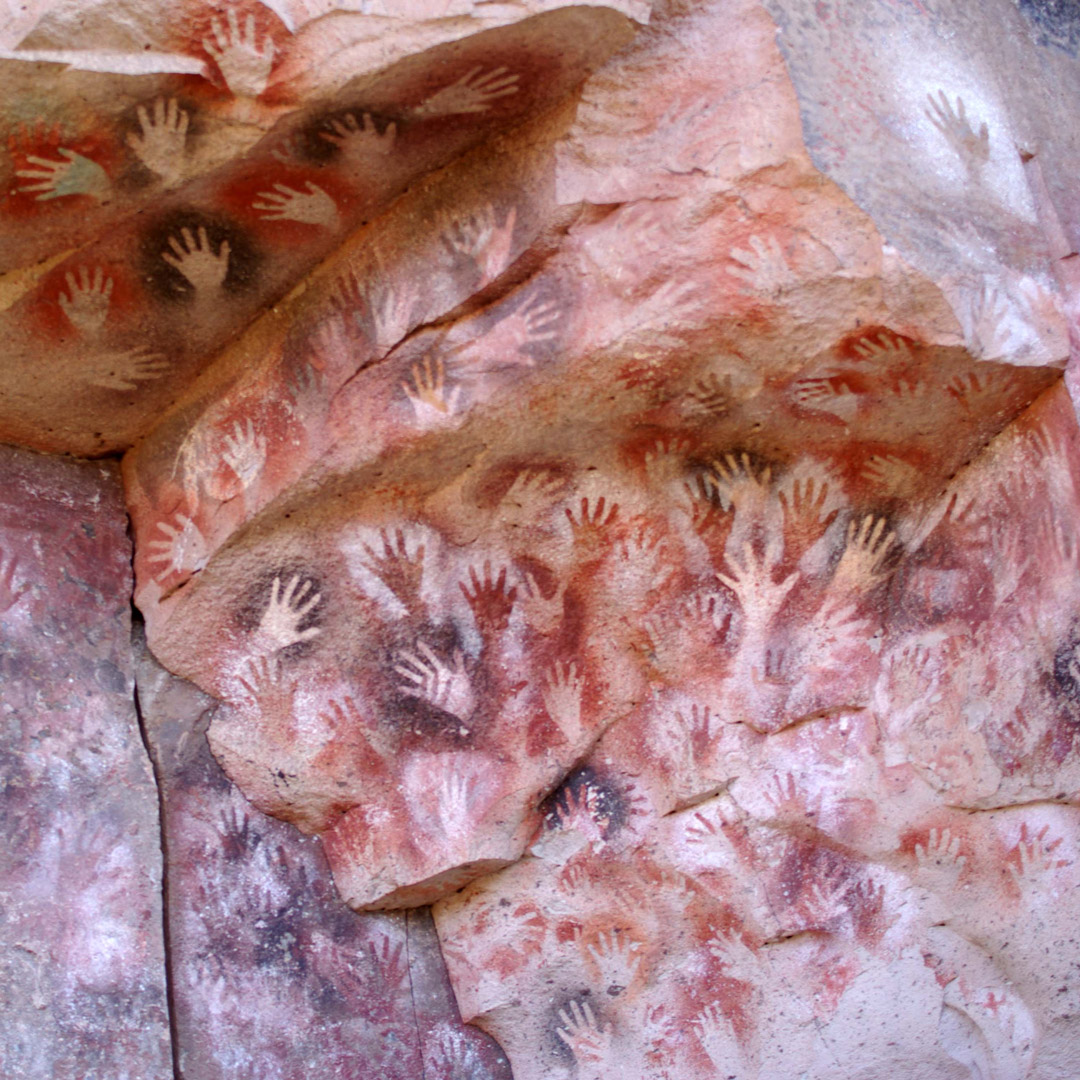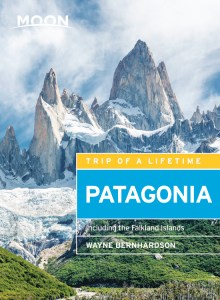Argentina’s Cueva de las Manos (the Cave of Hands)
Beyond Baja Caracoles, rugged RN 40 traverses the northern steppe until the point where, over millions of years, the Río Pinturas has cut a deep, scenic canyon. In the process, erosion has left countless aleros, stony overhangs often mistakenly called cuevas (caves). One of these is the Cueva de las Manos, a UNESCO World Heritage Site where stencils of hundreds of human hands, guanacos, and abstract forms cover the walls in orange, red, and yellow tones.

Dating from around 7370 b.c., the oldest paintings represent hunter-gatherers from immediate postglacial times. The more abstract designs, which are fewer, are more recent. Oddly enough, nearly all the hands from which the site takes its name are left hands.
Along with Parque Nacional Perito Moreno, this is one of La Cuarenta’s finest detours, with three main access points. From Bajo Caracoles in the south, gravel RP 41 goes directly to the visitors center (9am-7pm daily, foreigners US$10, Argentines US$5), where the province collects an admission fee for an obligatory guided tour. The center itself contains informational panels in imperfect but passable English. Metal screens now block close access to the paintings, to discourage vandalism and prevent repeated touching that could damage the paintings, but they do not obscure the view.
Another access point is Estancia Cueva de las Manos, another 23 kilometers north and 4 kilometers east in the Pinturas drainage. From there, another 18-kilometer access road leads to a parking area and a trailhead, where it’s a 2-kilometer hike that includes a sandy, slippery descent, with many loose rocks. By this route, mountain bikers can avoid backtracking to RN 40 by walking their bikes down the slope and then over the river (there’s a suspension footbridge, but the stream is usually shallow) and out the other direction. There is a new and shorter access road midway between the Bajo Caracoles and Estancia Cueva de las Manos.
Estancia Cueva de las Manos (Buenos Aires tel. 011/5237-4043, Nov.-Mar., US$80 s, US$100 d, with breakfast) has nine attractive, modern rooms with private baths, as well as hostel accommodations (US$25 pp, with breakfast) in two vast dorms, each with 18 beds, three toilets, and three showers. Its restaurant (US$30) serves lunch and dinner, including dishes such as pumpkin-stuffed pasta and excellent desserts. The wine list has some good but moderately priced vintages.
Estancia Cueva de las Manos is open November-March and sometimes for Semana Santa (the week before Easter). It also offers additional excursions besides Cueva de las Manos proper. It has no phone or Internet access here, but they have a Perito Moreno contact in Zoyen Turismo (Av. Juan Perón 1008, tel. 02963/43-2207, zoyenperitomoreno@hotmail.com).
